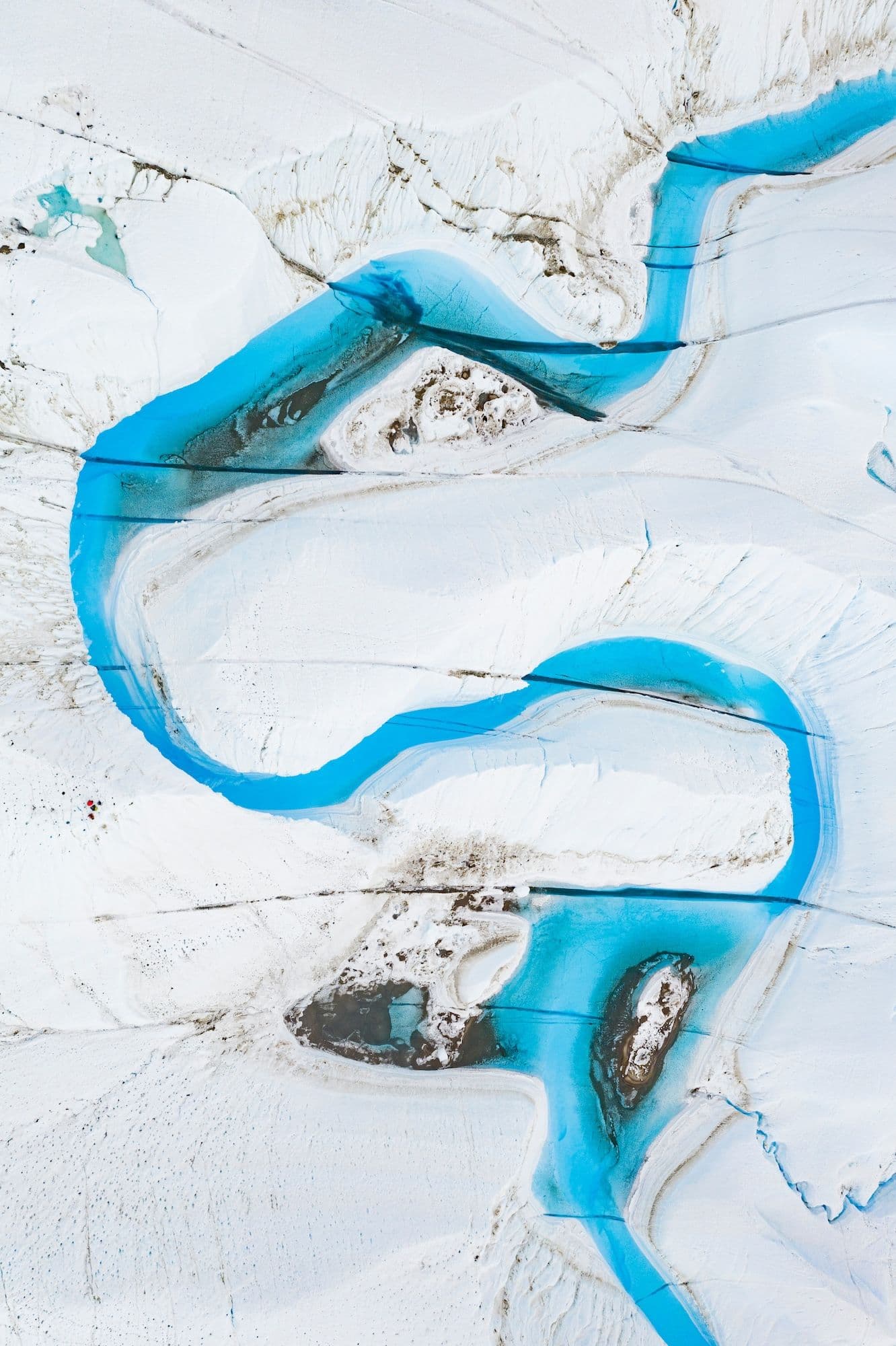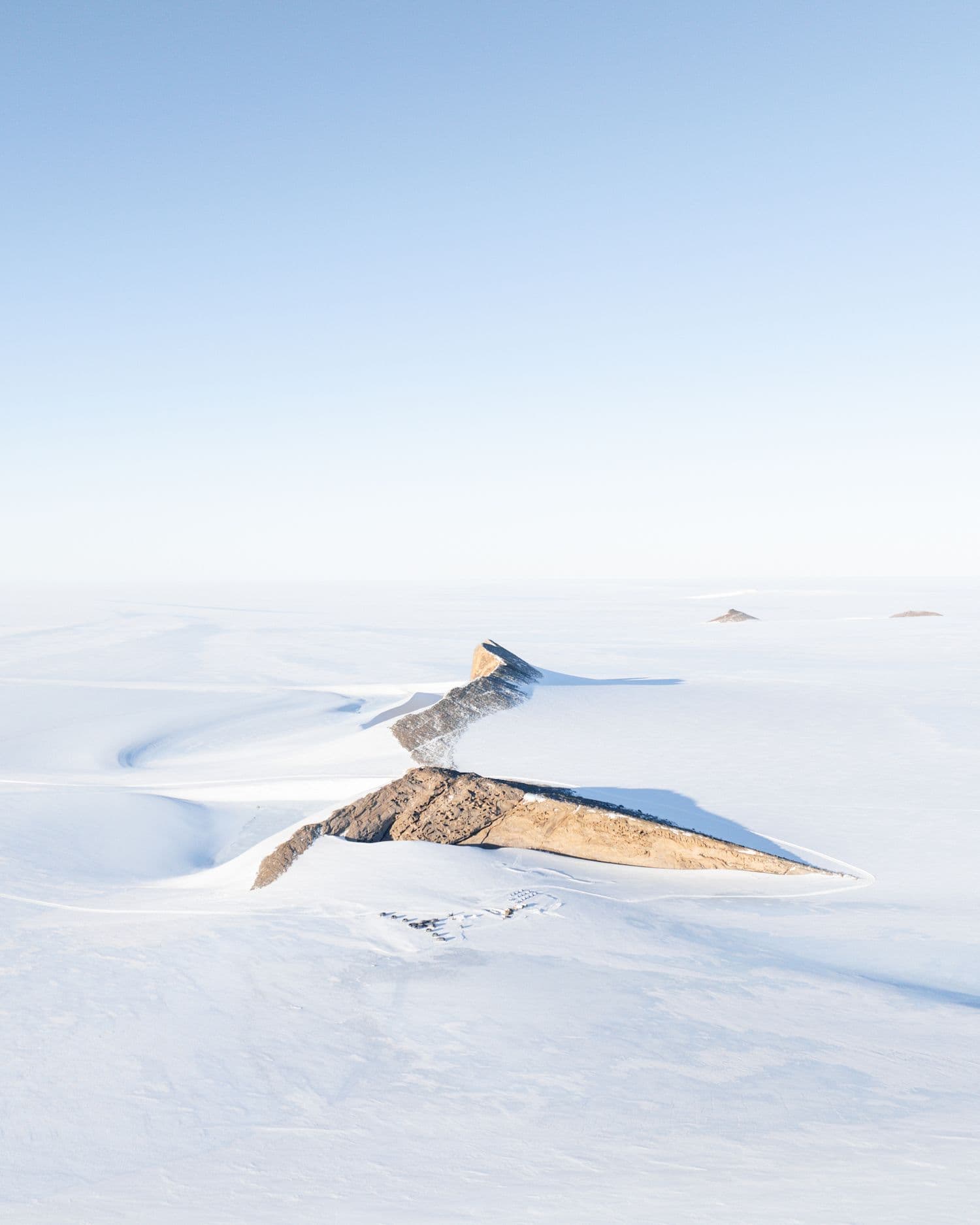Sentinels of the White Continent
Rising starkly from the East Antarctic Ice Sheet, the Drygalski Mountains of Queen Maud Land are among the most remote and visually arresting ranges on the continent. These mountains consist of towering nunataks and sharp granite spires that protrude through thousands of metres of ice, offering a rare glimpse into the ancient bedrock of East Antarctica. Many of these peaks are part of the Precambrian East Antarctic Shield and contain rocks more than a billion years old, shaped by deep-time metamorphism and tectonic collisions long before Antarctica drifted into its polar position. The dramatic T-Rex Nunatak, with its sculpted granite profiles and wind-carved flanks, stands like a sentinel above sweeping glaciers and vast crevasse fields formed by the constant flow and deformation of the ice sheet. Within this wild expanse lie Wolf’s Fang Runway and Echo Base Camp, two remarkable footholds that allow access to some of the continent’s most awe-inspiring terrain without disturbing the vast silence that defines it.





Gateway to the Interior
The Wolf’s Fang region is the logistical heart of White Desert’s operations, set upon a blue-ice field framed by dramatic nunataks, including the iconic Ulvetanna, or Wolf’s Fang Peak, whose sheer granite walls rise almost vertically from the ice. Blue-ice areas like this form through a combination of strong katabatic winds, sublimation and low snow accumulation, causing compacted, centuries-old ice to emerge at the surface.
These ancient surfaces often contain climatic records locked within compressed air bubbles, making them of scientific interest. Operational only during the Antarctic summer from November to February, Wolf’s Fang Runway sits atop this naturally occurring blue ice. At three kilometres in length and maintained solely by wind and seasonal temperatures, it is one of only a handful of runways in Antarctica and provides a stable, low-friction landing surface capable of accommodating intercontinental aircraft.
NUNATAKS, GLACIERS AND WIND-CARVED RIDGES FORM A STRIKING MOUNTAIN FRONT A LANDSCAPE THAT STANDS IN CLEAR CONTRAST TO THE VAST WHITE PLATEAU BEYOND.
More
about us

Our Story
The story of White Desert is, ultimately, the story of the people who believed it could be done.

Foundation
By leveraging our unique access to the Antarctic interior, we support researchers studying the planet’s climate and drive initiatives that reduce carbon emissions while restoring fragile ecosystems.

Sustainability
The Antarctic Treaty, first signed in 1959 and now joined by 46 countries, lays the foundation for all activity on the continent.

Our Camps
At White Desert, each of our camps reveals a different facet of Antarctica’s astonishing beauty.



